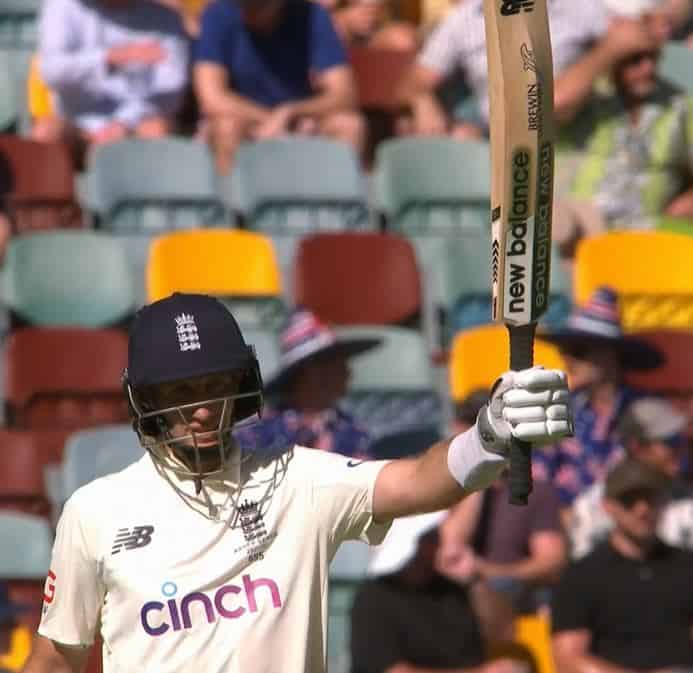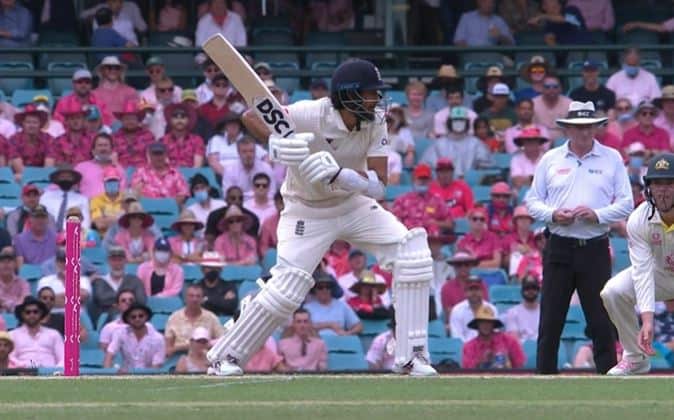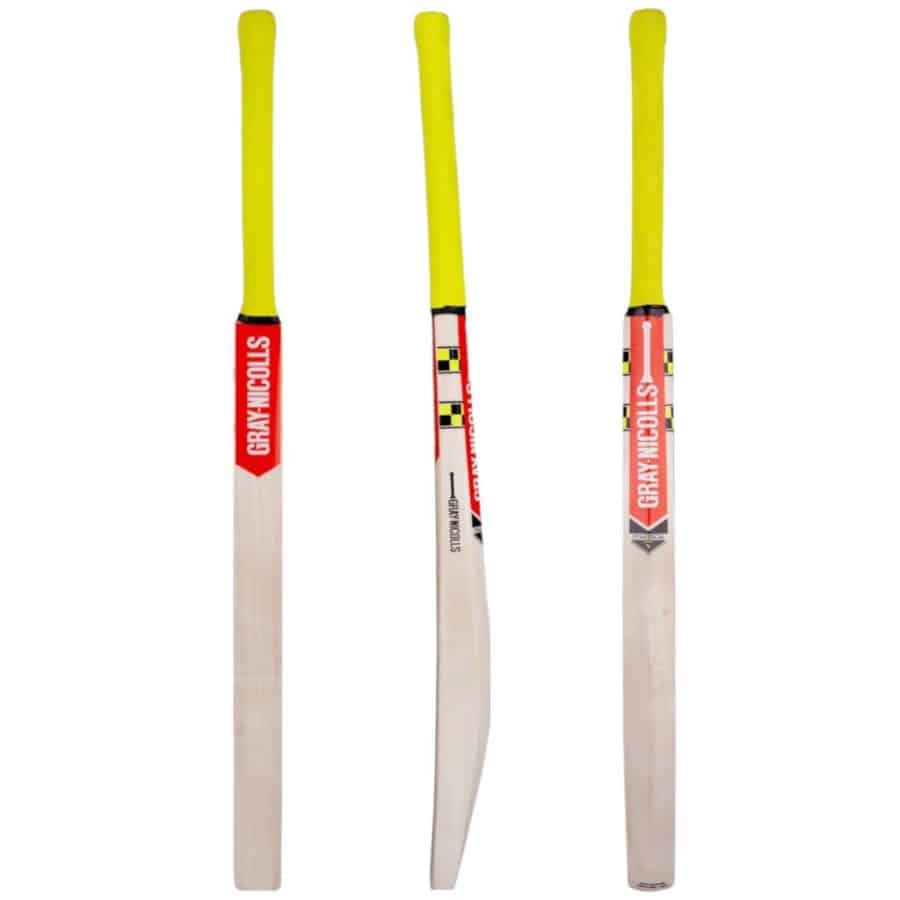Due to the absolutely massive range of cricket bats that are available, choosing one can often be a daunting task. There are literally hundreds of bats made by different companies, with different materials, and in different sizes. Because a quality cricket bat is likely to cost you a decent chunk of money, you will want to make sure that you’re aware of all of the different types that are available before you make your purchase. Only then will you be able to make a proper, informed choice about which bat you want to buy!
So, if you’re wanting a summary of every type of cricket bat that it’s possible to buy, you’ve come to the right place. In this post I’ll not only explain all the different types of bats, but I’ll also explain which types of cricketers each bat is most suited to! If that sounds like it would be valuable to you – make sure you read through all the way to the end!
So, what are the different types of cricket bats?
Cricket bats can broadly be categorised by their size, the material they’re made from, their brand & their weight. Within each category there is plenty of variation, so a cricketer will definitely be able to find a suitable bat. The table below will give you an idea of the types of bats you’ll find in each category.
| Sizes | Materials | Brands | Weights |
| Junior Size 0 | English Willow | Kookaburra | 2lb – 2lb 6oz (Junior bats) |
| Junior Size 1 | Kashmir Willow | Gray Nicolls | 2lb 6oz – 2lb 12oz+ (Adult bats) |
| Junior Size 2 | Plastic | MRF | |
| Junior Size 3 | DSC | ||
| Junior Size 4 | Adidas | ||
| Junior Size 5 | New Balance | ||
| Junior Size 6 | Gunn & Moore | ||
| Harrow | SG | ||
| Short Handle | Puma | ||
| Long Handle | Aero | ||
| Newbery | |||
| Woodworm | |||
| Salix | |||
| Slazenger |
In some cases there may be slight variations to the lists above, but these are the main types of bats that are available. In the sections below, I’ll go through each category of cricket bat and explain the things that each cricketer or parent will have to consider when choosing a type of bat from the table above! Let’s get into it…
Types Of Cricket Bat Sizes
As you can see from the table above, there are roughly 9 different sizes of cricket bat that a cricketer can choose from. Six of these sizes are for junior cricketers, 2 are for adult cricketers, and the ‘Harrow’ bat is what I consider to be a junior/adult hybrid type of bat. Junior cricketers that are quite tall for their age will often find themselves using a harrow size bat, whilst adults who are on the smaller size of the height scale could also end up using a harrow.
So, how does a cricketer know which size bat they need? Well, it isn’t an exact science, but it broadly can be determined by knowing what height you are. Have a look at the table below and you’ll see what I mean!
| Height of Batter (Feet & Inches) | Recommended Bat Size |
| 4ft and under | Junior Size 0 |
| 4ft – 4ft 3 inches | Junior Size 1 |
| 4ft 3 – 4ft 6 inches | Junior Size 2 |
| 4ft 6 – 4ft 9 inches | Junior Size 3 |
| 4ft 9 – 4ft 11 inches | Junior Size 4 |
| 4ft 11 – 5ft 2 inches | Junior Size 5 |
| 5ft 2 – 5ft 6 inches | Junior Size 6 |
| 5ft 6 – 5ft 9 inches | Harrow |
| 5ft 9 – 6ft 2 inches | Short Handle |
| 6ft 2 inches and above | Long Handle |
In my opinion the size of the bat you choose is the most important consideration, so if you stick to the size guide above you should make the correct choice the majority of the time. All you have to do is measure yourself or your child and see what category you/they fall into!

Types Of Cricket Bat Materials
If you’re looking for a proper cricket bat like the ones that professional players use, then there are two main materials that it could potentially be made from; English willow or Kashmir willow. English willow is often regarded as being the highest quality type of willow. Therefore, a high-quality grade 1 English willow bat is likely to cost you somewhere towards the highest limit of your price range!
Cricketers that are looking for a cheaper bat, or ones that they could use against rubber balls like wind balls, could potentially choose to opt for a bat made out of Kashmir willow. Kashmir willow is often said to be drier and harder than English willow, therefore it is usually available for cheaper prices!
Lastly, you have plastic bats! These are by far the cheapest option available and are usually only bought for small children and people who are looking for a simple introduction in to the sport. Plastic bats are great for kids because they don’t weigh much at all, making them easy to swing and strike the ball with! Obviously, plastic bats should only really be used to hit tennis balls, or softer sponge balls.
Types Of Cricket Bat Brands
When it comes to all of the different cricket bat brands, the first thing to say is that there’s certainly plenty of choice! I included a lot of the major brands in the table at the beginning of this post, but there are definitely plenty of smaller brands in addition to those. Generally, the more famous the brand, the higher price that brand can charge for a bat. If you were to buy one from a smaller, more obscure company that doesn’t have many international players using their products, you would probably end up paying less.
Which type of brand you choose to purchase a bat from honestly depends on your individual preference. Some brands are more visually appealing than others, so some cricketers will make their choice on this basis. Others simply like to buy the same brand as the one that their favourite players use! When I first got interested in cricket, I wanted a Woodworm Flame or a Woodworm Torch cricket bat because they were the ones that Andrew Flintoff and Kevin Pietersen used. Legions of Indian cricketers used MRF bats because players like Sachin Tendulkar and Virat Kohli have kept them hugely popular in the last 20 years. Recently I’ve become much more of a fan of the more classical brands like Gunn & Moore and Gray Nicolls, and I’m eyeing up one of the Gray Nicolls range for my next purchase!

If you’re looking for a bat brand that you like, I’d recommend looking through the list I provided in the table at the start of this post and doing some research online to see what their ranges look like. Each brand will usually have several bats with different styles that are available, so you should definitely be able to find something that suits your tastes!
Types Of Cricket Bat Weights
The weight of your cricket bat is an incredibly important consideration to make. If you pick a bat that is too heavy, you won’t be able to move it and swing it as freely, which can impact how quickly you can play your shots and get your hands through the ball. A bat that is far too light may cost you in the power department – meaning your shots don’t have as much power behind them as they could do if you had a bat with a bit more meat on it!
As I stated in the table at the start of this post, a bat that weighs between 2 pounds – 2 pounds 6 ounces is one that is usually more suitable to junior cricketers. Bats that weigh more than 2 pounds 6 ounces are usually more suitable for adults!
However, the weight of your bat in pounds and ounces is often less important than the ‘pickup’ of the bat. The ‘pickup’ basically refers to how the weight of a bat is distributed along the blade. For example, some bats may feel top heavy, and some may feel as if most of the weight is at the bottom of the bat. Ideally, when you pickup the bat you’ll feel that the weight is nice and evenly distributed and that the bat feels a bit lighter and easier to manoeuvre as a result. This is what is referred to as a ‘nice pickup’.
If you use the table I provided earlier in this post and get the right size bat to match your height, there’s a high chance that the weight of this bat will also be perfectly fine for you. However, in a small number of cases a specific player may prefer a slightly lighter or heavier bat – as I said earlier, it all comes down to individual preference!
Other Types Of Cricket Bats
There are also other cricket bats available that aren’t used in real matches. Let’s have a look at a few of these below…
Technique Bats
Technique cricket bats are a much thinner version of a normal cricket bat. The blade of the bat isn’t much thicker than the handle, meaning that the bat is about as wide as a typical cricket stump.

So, what is a bat like this used for? Well, many cricketers such as AB de Villiers like to practice with a thinner cricket bat in order to perfect their timing. Because the face is nowhere near as wide, it forces a batter to play the ball later and time the ball better because there is less room for error. Only a perfect shot will succeed when playing with a bat this thin. I remember AB de Villiers saying that after he’d used a bat like this in practice, returning to his usual one made him feel as if he was in much better form.
I’ve used technique bats plenty in the past, and I’d definitely recommend them if you’re trying to practice in an interesting and innovative way!
Fielding/Slip Catching Bats
These bats have a shorter handle and a shorter blade, making it easier for coaches to hold them with one hand during practice. A coach will usually use these to hit high balls for fielders to catch, or to simulate slip catches by glancing the ball off the face. If you’re a coach who wants to help your team work on their fielding, then there are some great drills that you can do using these bats!
Conclusion
I hope this post has given you a better understanding of all of the different types of cricket bats that are on the market. Once you purchase your bat, I’d recommend reading my guide on how to oil and ‘knock it in’. Oiling and knocking in your bat is a critical process and if not done properly it can lead to your bat breaking or cracking very early in its lifespan! If you’d like to read my post on that and learn exactly how to do it – click here!
